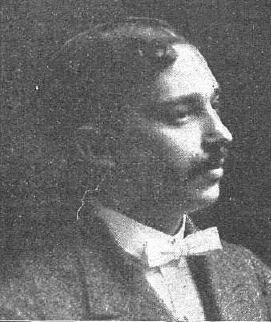
Levante Unión Deportiva, S.A.D. is a Spanish football club in Valencia, in the namesake autonomous community.

Mexican literature is one of the most prolific and influential of Spanish-language literatures along with those of Spain and Argentina. Found among the names of its most important and internationally recognized literary figures are authors Octavio Paz, Alfonso Reyes, Carlos Fuentes, Sergio Pitol, José Emilio Pacheco, Rosario Castellanos, Fernando del Paso, Juan Rulfo, Amado Nervo, Sor Juana Inés de la Cruz, Ramón López Velarde, and Carlos de Sigüenza y Góngora, among others.

Caran d'Ache was the pseudonym of the 19th century Russian-French satirist and political cartoonist Emmanuel Poiré.

Vicente Blasco Ibáñez was a journalist, politician and bestselling Spanish novelist in various genres whose most widespread and lasting fame in the English-speaking world is from Hollywood films that were adapted from his works.

Grip was a Toronto, Ontario design firm that was home to many of Canada's premier designers and painters during the first half of the 20th century.
Manuel Altolaguirre was a Spanish poet, an editor, publisher, and printer of poetry, and a member of the Generation of '27.

The governor, according to the Political Constitution of the Free and Sovereign State of Veracruz de Ignacio de la Llave in Mexico, the Executive Power is invested in one individual, called "Constitutional Governor of the Free and Sovereign State of Veracruz de Ignacio de la Llave". The current governor is Cuitláhuac García Jiménez, who assumed the position on December 1, 2018. He is a member of the National Regeneration Movement.
Ernesto Giménez Caballero, also known as Gecé, was a Spanish writer, diplomat, and pioneer of Fascism in Spain. Director and founder of the avant-garde magazine La Gaceta Literaria (1927–1932), his work has been categorized as being part of the Futurist and Surrealist movement, while Stanley G. Payne has described him as the Spanish Gabriele d'Annunzio.

K-Hito was the pseudonym of Ricardo García López (1890–1984), Spanish humorist, caricaturist, bullfighting critic, film producer, and magazine publisher. Considered part of the Generation of '27, he was the founder and director of four magazines, in the pages of which he created several characters, such as Gutiérrez, Macaco, Currinche, and Don Turulato.
The Secretariat of Infrastructure, Communications and Transportation of Mexico is the national federal entity that regulates commercial road traffic and broadcasting. Its headquarters are in the Torre Libertad on Reforma in Mexico City but some aspects of the department still function at the old headquarters located at the intersection of Eje Central and Eje 4 Sur (Xola). The building is decorated with murals created by arranging small colored stones on the building's outer walls.

The Spanish Republican Navy was the naval arm of the Armed Forces of the Second Spanish Republic, the legally established government of Spain between 1931 and 1939.

L'Asino was an Italian magazine of political satire founded in Rome in 1892, by Guido Podrecca (1865–1923) and Gabriele Galantara (1867–1937), a former mathematics student, designer and cartoonist, both with a socialist background. The two took the pseudonyms "Goliardo" (Podrecca) and "Ratalanga" (Galantara), and with these nicknames signed the outputs of the weekly. The magazine's title was from a saying of Francesco Domenico Guerrazzi that said that "the donkey is like the people: useful, patient and stubborn", which became the subtitle and the motto of the editors.

El Mono Azul was an anti-fascist magazine which was published in Madrid during the Spanish Civil War. The magazine existed between 1936 and 1939 and was one of the major cultural, intellectual and artistic publications during the war with the subtitle hoja semanal de la Alianza de Intelectuales Antifascista para la Defensa de la Cultura.
La Ametralladora was a weekly satirical magazine which was published in Spain during the period 1937–1939. It was distributed to the nationalists fighting in the civil war.











